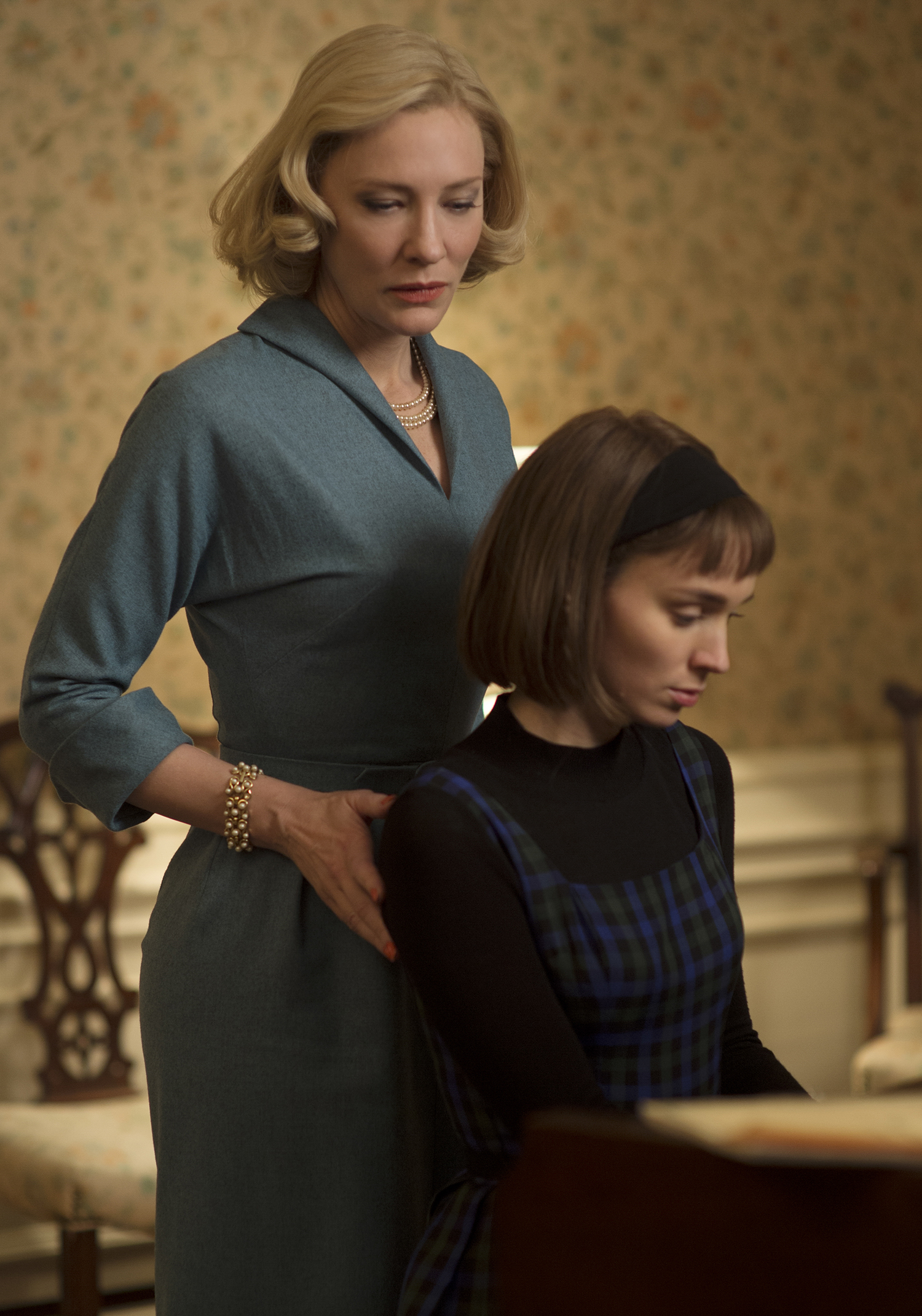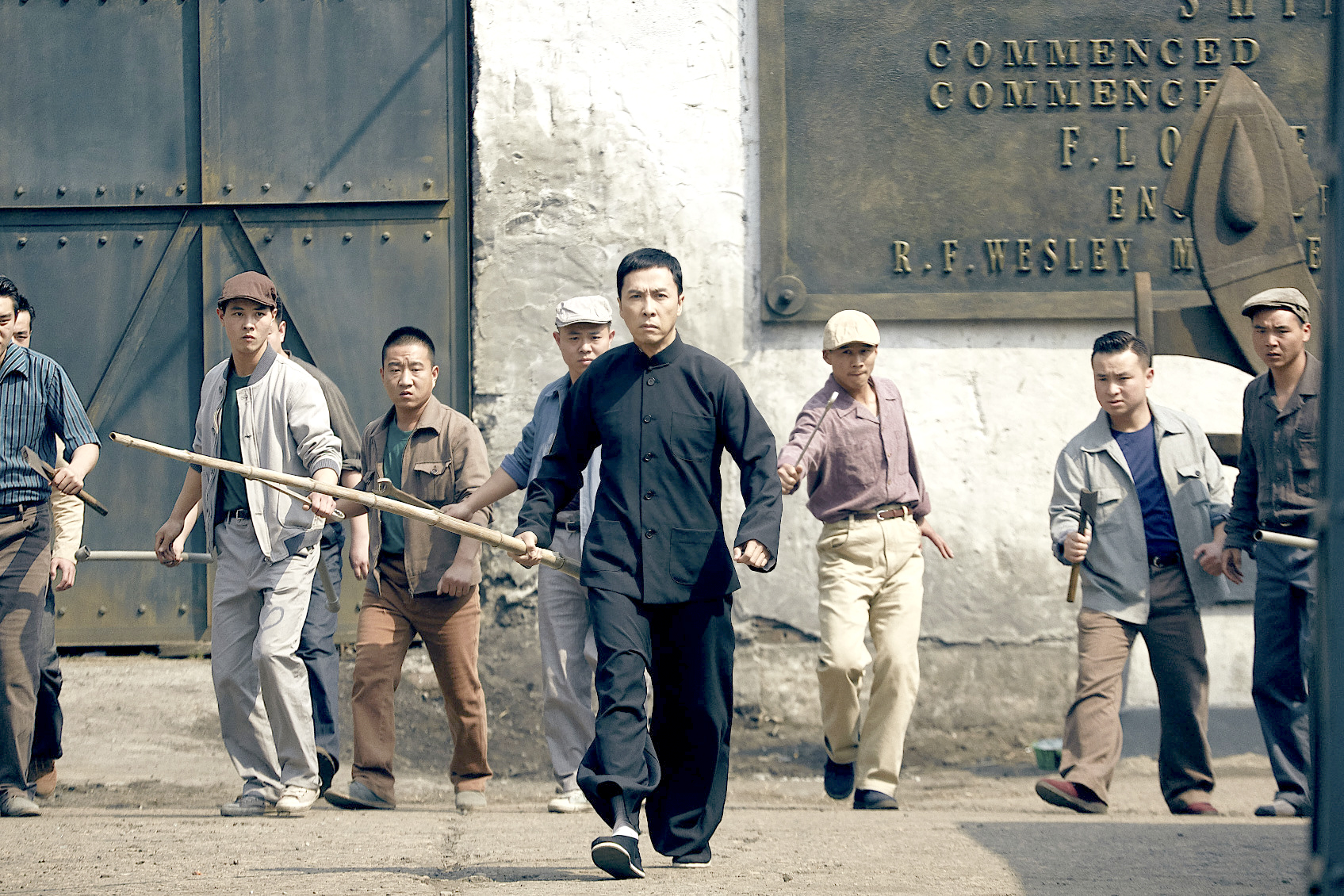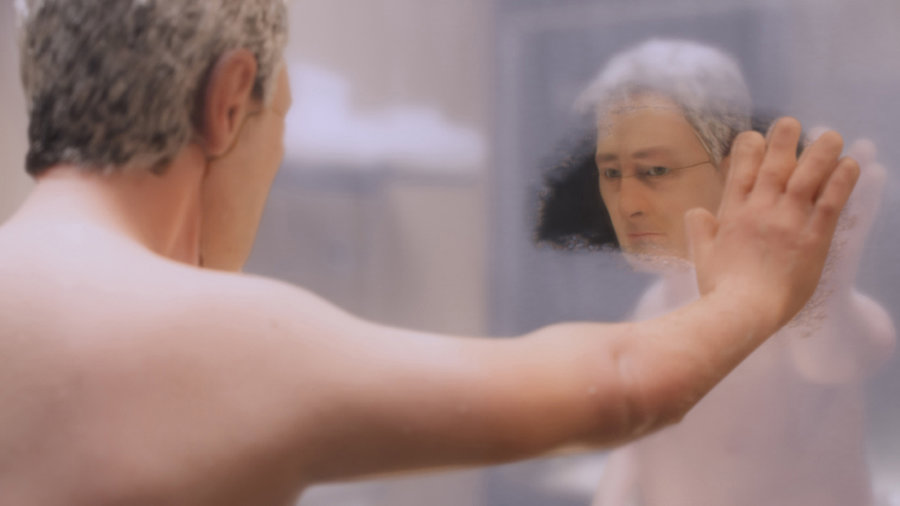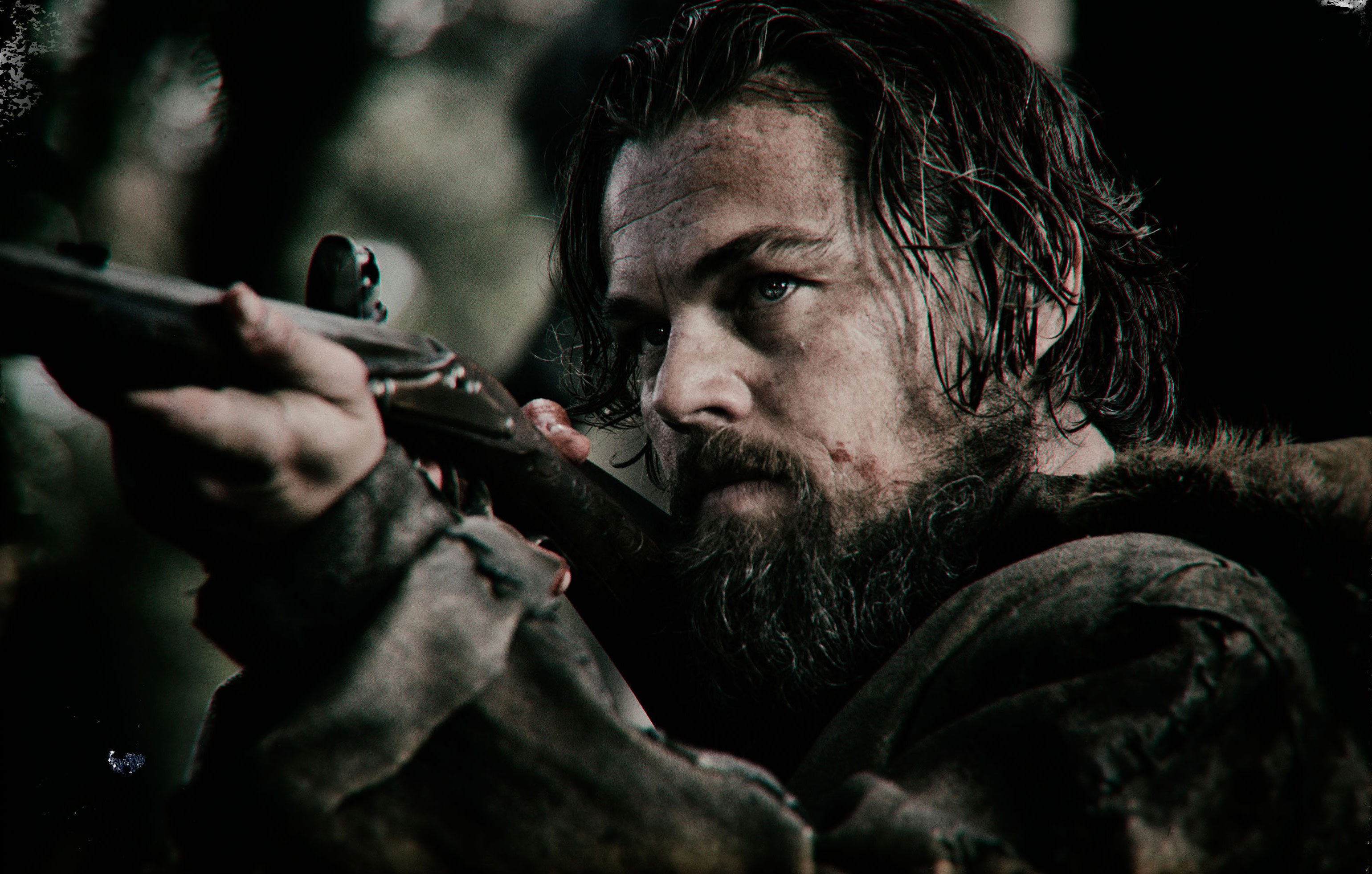The Price of Salt is a 1952 novel by Patricia Highsmith (using the pseudonym Claire Morgan) about a lesbian romance. It sold a lot of copies in an underground way, and must’ve had great subversive punch as both a tale about “a love that dare not speak its name” and one in which the gay protagonists were not subjected to either a straightening “cure” or guilt-ridden suicide. In 2015, that layer of illicit discovery is impossible for Todd Haynes’ movie adaptation to resurrect. The Portland-based director instead presents a period piece that presents its passions in impeccably designed scenes that contain remarkably few surprises.
The romance simmers between Therese (Rooney Mara), a department-store salesgirl with vague notions of becoming a photographer, and Carol (Cate Blanchett), an elegant lady currently divorcing her respectable husband (Kyle Chandler). The unformed Therese has a boyfriend (Jake Lacy) but is stirred by Carol’s fur-swaddled allure; they meet in Manhattan during Christmas season 1952, and a slow-burning attraction develops. Carol’s custody battle with her husband—a man more bewildered than evil—is affected by her sexual orientation, but Haynes is less interested in the social-issue aspects of the story than in the hesitant intimacy between the two women. This plays out against luscious production design, which frankly overwhelms the people—were the ’50s really this relentlessly arranged ?—like a visual reminder of the constraints on this romance.
Haynes recalibrated the mid-century melodrama in Far From Heaven, but Carol is less artificial than that exercise. His best borrowing here explicitly lifts a storytelling device from the classic Brief Encounter : beginning the film with the romance’s end (trampled on by a boorish bystander), and then flashing back so that when we return to the scene 90 minutes later we understand what was really happening. The twist on Brief Encounter is that these characters do not have to be martyred on the altar of propriety.
Blanchett rises from the screen like a careful layout from a glossy magazine, all Joan Crawford–style mask—with only the occasional side glance to suggest uncertainty. Mara, the tranquil star of The Girl With the Dragon Tattoo, brings her tiny intensity to bear on a character who remains quiet (Phyllis Nagy’s screenplay is short on spelling out meanings). If Carol feels less adventurous than Haynes’ previous forays into upending Hollywood styles, it still maintains a pulse because Blanchett and Mara are superb at executing one of the cinema’s great gifts: the exchanged glance, held long enough to scorch even the well-mannered ’50s.
film@seattleweekly.com







